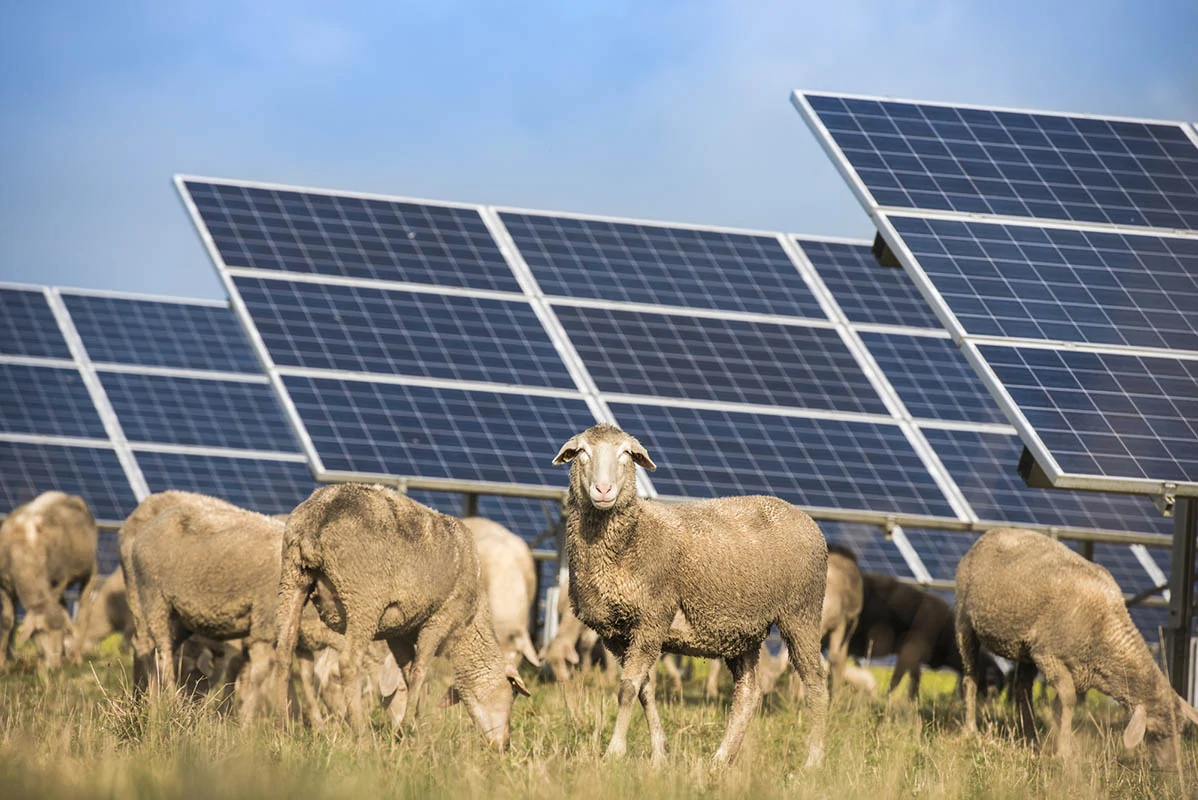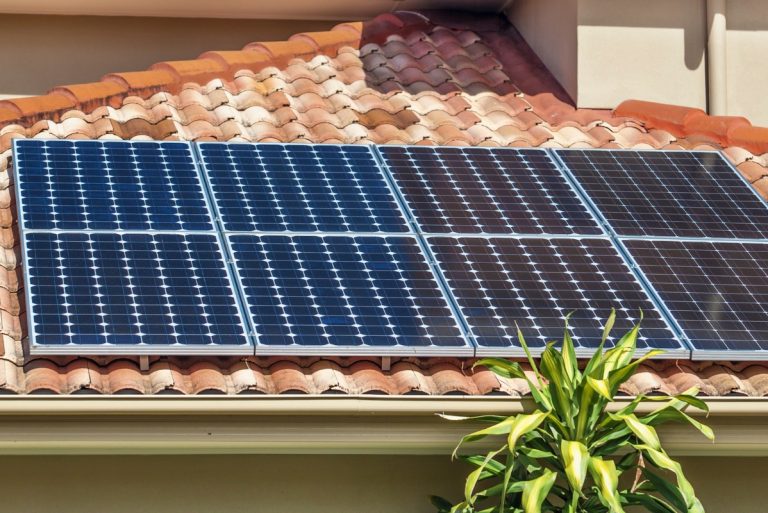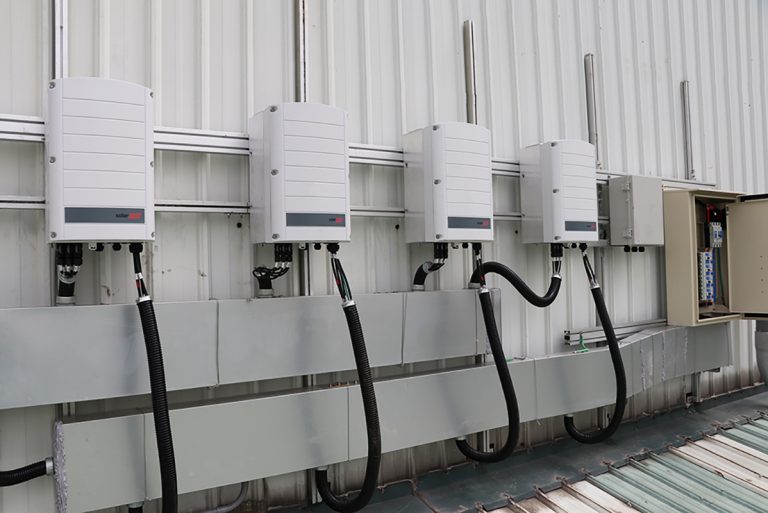Our climate crisis is delivering destructive wallops non-stop across the United States. Sadly, farmers and ranchers receive some of the harshest of its lethal punches.
Solar developers woo desperate farmers to forsake agriculture and relinquish control of their land in the name of bringing clean energy to save the world while they pocket huge profits due to how the solar contract is worded to their benefit, often at your expense.
The solar developers’ insistence on “flat, clear land” eats up prime acreage covered in the best topsoil suitable for growing food. All in the name of transforming our energy system away from fossil fuels toward solar energy — a worthwhile goal indeed.
But with predictions of impending food shortages — from crop damage and reduced productivity, also results of our climate emergency — it appears humanity is headed for extreme disruptions to having plentiful food available year round. Fewer free acres to grow food, since they’re occupied by solar panels, doesn’t help.
So, the burning question becomes: Is there enough land for both food and solar farms?
Is there enough land for both food and solar farms?
This is where agrivoltaics (also called solar sharing) comes in.
Imagine employing your rich farmland to feed and electrify communities (including your own) simultaneously. A world where food crops and solar panels can coexist productively and lucratively for all — including you, the landowner.

Source: Wikimedia / UC Davis College of Engineering
In this article, you’ll discover how agrivoltaics is revolutionizing both food and energy production at the same time and in the same places.
More importantly, you’ll find out about a playbook — already written — to guide you in negotiations with local and state authorities and with solar developers about using your land simultaneously for both growing food and creating electricity from sunlight without being penalized and with no financial risk to you.
In fact, agrivoltaics will allow you to continue doing what you love the most while at the same time boosting your bank account from consistent passive income — as long as the sun shines.
From this article, you’ll have the scientific evidence, bargaining tools, and necessary resources to make agrivoltaics work for you — and for the rest of us who rely on you to meet our needs for both food and energy.
What is agrivoltaics?
As the term implies, agrivoltaics is the practice of using farmland, range, or pasture for agriculture (including raising livestock) at the same time that photovoltaic (PV) panels on that property generate electrical energy from sunlight and transmit it back to the electric grid for public consumption.
The word is derived from agri, referring to food production through cultivation, and voltaic, related to energy production.
Agrivoltaics brings the two endeavors together for the first time. No longer is it a contest for food versus energy. Both agriculture and photovoltaics exist side by side and make farming truly sustainable in more ways than one.
A recent study by Oregon State University researchers estimated that converting just 1% of US farmland to agrivoltaics would cost just 1% of the federal budget with a payback period of just 14 years. This would permit the US to meet all of its current renewable energy targets in its transition away from fossil fuels.
With the rapid expansion of renewable energy, there is a growing demand for wide open spaces for solar panel placement. As urban and suburban sprawl and new construction have taken over much unoccupied land, solar developers are turning to farmland, range, and pastures as candidates for an exploding number of utility-scale and community solar projects.
Without a doubt, farmland is their top choice.
In fact, a 2019 study published in the journal Science Reports found that the highest efficiency of solar energy production occurs over cropland used to grow food.
Scientific experts across diverse fields are actively investigating agrivoltaics as a way to meet the common need on the parts of both agriculturalists and solar developers for land.
In later sections of this article, you’ll discover some of the amazing findings of just a sampling from that growing body of research.
Solar farm land requirements and agrivoltaics
In a previous article, we looked at the solar farm land requirements of typical utility-scale and community solar projects. The assumption is that there is enough available “flat and clear” land to house thousands of large-scale solar projects that local, state, and federal governments are calling for.
But this is misleading.
“Flat and clear” farmland is at a premium in the United States because it’s dwindling fast due to increasing pressure for industrial expansion and increased housing developments.
Yet, in September 2021, the U.S. Department of Energy announced the results of its Solar Futures Study.
“..solar, our cheapest and fastest-growing source of clean energy, could produce enough electricity to power all of the homes in the U.S. by 2035…”
Energy Secretary Jennifer Granholm
Unfortunately, the report did not specify exactly where the solar energy would be generated. Nor did it discuss how land use and energy production rules and regulations must be updated to incentivize solar energy development and rebuild electric grid infrastructure.
On the other hand, the National Renewable Energy Laboratory (NREL) estimated that by 2030, two million acres will be required to house all the utility-scale solar farms expected to be in operation by that time.
Meanwhile, United States President Biden opens up even more federal land to oil and gas development despite his campaign promise to the contrary and his repeatedly calling our climate emergency “an existential crisis.”
Notably, this opening is on top of the 13.9 million acres that are already leased to the fossil fuel industry yet go unused! This fact came to light at a recent Congressional hearing on Big Oil’s decades-long misinformation campaign by California Congresswoman Katie Porter.
A solution to this problem of lack of land to meet seemingly conflicting human needs for food and energy is to develop agriculture and solar farms together. In other words, agrivoltaics.
Recent research findings on agrivoltaics
There are plenty of examples of agrivoltaic success in a rapidly expanding body of scientific research. They all support the feasibility of the coexistence of agriculture and solar energy production. Here are a few examples from the United States:
1. 2018 study on Oregon dry farmland
If you’re a farmer or rancher whose pastures aren’t irrigated or are water-stressed, would you believe that solar panels could actually increase your agricultural productivity?
Research published in PLOS One found that solar panels in neglected pastures:
- Encouraged plants and grasses to flourish in the shade created by the PV modules, resulting in twice as much growth compared to sunny plots, greater nutritional value, and 90% more biomass at the end of the growing season.
- Promoted higher soil moisture retention underneath, even during the hottest months.
- Created more water efficiency among the plants and grasses that used water slowly compared to plants in sunny areas that used it quickly then died (328% more efficient).
2. 2019 study in the Arizona desert
The journal Nature Sustainability published an article on a successful agrivoltaics experimental study. Researchers found that with locally grown vegetables — chiltepin pepper, jalapeño, and cherry tomato plants — PV panels do wonders for productivity.
Chiltepin pepper harvest was three times greater when shaded by solar modules than not. Cherry tomato yield was twice as great.
Jalapeño production came out the same, but with 65% less transpiration. This meant the plants retained more water under panels compared to when they were exposed to direct sun.
As extended drought becomes typical in practically the entire western HALF of the United States, doing everything you can to conserve water for growing food — the #1 use by far of fresh water consumption — is essential for agricultural productivity.
Long-term water conservation accomplished at the crop level is a great way to ensure favorable outcomes as a farmer to meet humanity’s need for food.
In fact, in this particular study, soil moisture levels were 15% higher on average, thus reducing the need for frequent irrigation. This is a critically important advantage of agrivoltaics in drought-weary regions.
As a result, peppers needed 50% less water and tomatoes, 30% less.

Source: Wikimedia / Asurnipal
But there’s more.
This research discovered that it’s not only agriculture that gets a lift when grown under panels.
Agriculture is good for solar energy production, too!
The transpiration of plants — just like patio or grocery store produce section misters — acted to keep the solar panels cool from underneath, countering the fact that photovoltaic cells work less efficiently when they’re hot.
Specifically, live plants under PV modules increased energy output by 2% in this Arizona research project.
When the best solar panel efficiencies are 22-23%, that 2% is an incredible addition!
Another benefit that solar panels provided, noted by this research team, is relief to farm workers suffering from heat stroke, heat-related illness, or even death. Unfortunately, few regulations are on the books to protect them. Their skin temperatures dropped significantly when working under modules compared to being beneath a swelteringly hot sun for hours upon hours receiving poor wages.
3. 2018 study on sheep grazing in New York
One disadvantage of solar farms as traditionally conceived without agriculture, as noted in our previous article on solar farm land requirements, is that solar companies must somehow control the noxious weeds growing around or under panels. Sometimes, they creep onto neighbors’ properties.
Unfortunately, many companies resort to herbicidal spraying, which is not eco-friendly.
Enter solar grazing!
As an example of several experimental trials in the US, Cornell University researchers employing sheep to eat the weeds at solar farms in New York report astounding success.

Source: Wikimedia / Merrill Smith
Using the sheep as solar grazers was 2½ cheaper than hiring a landscaping service. The sheep also prevented vegetation from getting too high, creating shading issues that would lower panel energy output.
Solar grazing holds immense potential as an environmentally friendly business. Imagine the marketing allure of “solar-raised” wool or meat among renewable energy supporters and others into green living.
A Pennsylvania seed company aims to expand pollinator habitat by selling Fuzz and Buzz seed mixes specifically designed to attract bees and other pollinators critical to the growth and productivity of many food crops. They work superbly well with solar grazing.
In all these ways evidenced by just three of many research endeavors, agrivoltaics holds much promise for the very future of humanity — in terms of food and energy production — in light of our climate crisis.
In the next two sections of this article, you’ll find out about steps you can take now to make agrivoltaics central to your life and livelihood as a farmer, rancher, or landowner no matter where you live in the United States.
How to get started in agrivoltaics: examples and resources for farmers, ranchers, and landowners
Imagine the agrivoltaic setting of the infographic below on your own property, complete with agriculture and solar energy production for you, your local area, and the wider community as a whole:

It could be yours. Harvesting the power of the sun twice through the food you grow and the energy you produce from solar panels.
More importantly, when you’re approached by solar companies wanting to construct a solar project on your land if you meet the minimum solar farm land requirements, begin the conversation by directing their attention to the following two agrivoltaics success stories. Make it clear that you envision the same for your property, and won’t settle for anything less.
You’ll be deliberating on solid ground, with the upper hand. Remember: it’s your land!
1. Regenerative energy
To make agrivoltaics a reality for you as a farmer or rancher, start with Silicon Ranch’s regenerative energy website for inspiration.
With the motto, Making solar do more, you’ll be encouraged to read about the projects across the US that integrate solar farms with regenerative agriculture.

In fifteen different ecoregions, Silicon Ranch provides hope to farmers and ranchers alike that solar power can coexist productively with whatever type of agriculture you practice.
For instance, regenerative agrivoltaics can:
- Revitalize soils
- Restore grassland ecosystems
- Build biodiversity
- Sequester carbon
- Improve water quality
- Rejuvenate communities
- Energize local economies
What’s not to like about regenerative agrivoltaics?
2. Jack’s Solar Garden in Colorado
As the largest experimental agrivoltaics project in the US, this 1.2 MW solar farm integrates agriculture beautifully and lucratively for its small family farm owners and their community.
Situated on only 24 acres and equipped with 3,276 PV panels with solar trackers on a small portion of the property, Jack’s produces:
- Enough electricity to power 300 homes and supply 50+ residential subscribers, five commercial subscribers, the City of Boulder and Boulder County.
- Forty types of vegetables and fruits grown under the PV system, and 3,000 trees, shrubs and many pollinator-friendly species grown around the panels.
They’ve even founded a learning center for agriculturalists interested in dual land use farming with photovoltaics.
You can find out how they overcame common challenges with agrivoltaics such as:
- Installing panels at different heights above the crops for farm machinery to have access
- Avoiding soil compaction
- Protecting solar hardware and the people working around the array
Farmland Solar Policy Design Toolkit
If you’re a farmer or rancher excited about the possibilities of developing an agrivoltaic system of food and energy production on your land, start with the Farmland Solar Policy Design Toolkit created by the Farm and Energy Initiative of the Vermont Law School and funded by the National Agricultural Library.
Note: Although this Toolkit is a good start when it comes to solar farm policy, it’s limited when it comes specifically to agrivoltaics. For this, you may need extra legal help.
One of the few mentions of agrivoltaics appears in the Introduction of the Toolkit:
“Policies that identify and incentivize preferred sites for solar development and “dual use” or “agrivoltaic” solar installations are more complicated to integrate into solar development permitting, metering, interconnection, and other land-use and energy policies, but provide the most robust strategies for farmland protection in [and] by states today.” (Emphasis added)
Clearly, the authors suggest the need to write a Part 2 on agrivoltaics!
Until that document is published and as the Toolkit stands now, this comprehensive policy guide should be viewed as a source of self-empowerment by all farmers, ranchers, and landowners interested in agrivoltaics.
Don’t be bamboozled by solar developers desperate for your land. They will likely present the interpretations of local and state laws that benefit them the most. After all, they are in business to make money, good intentions or not. They may insist only they have the necessary background and knowledge to navigate the system for you.
Keep in mind that they may not be telling you the whole story. With knowledge comes power. So, start by educating yourself about what those rules and regulations surrounding farmland, energy production and distribution, and solar development are in your area.
Remember that all rules and regulations can be rewritten to meet ever-changing realities (like renewable energy goals) and technological advances (like agrivoltaics). It may not be easy. But it is possible.
In the case of renewable energy, keep in mind that states, cities, and counties are establishing carbon-free energy standards and goals all the time. This by itself warrants a revision of laws that aren’t amenable to the development of agrivoltaics but need to be.
Granted, you may need to build a case for it in your local area. This is why, in our article on solar farm land requirements, we advised it’s important to find and hire an attorney familiar with local and state laws applicable to the creation of solar farms. The same advice applies to agrivoltaics projects.
In the Toolkit, you’ll find out about many pertinent topics that are, in actuality, deliberation points when requesting a change in policy at your state or local level. Some of the subjects discussed include:
- How state and local regulatory authority operates
- Legal definitions of farmland and solar development
- How renewable energy goals and targets affect farmland
- Land use and energy permitting procedures
- How energy compensation schemes and rates affect farmers
- Electrical interconnection rules and what they mean for solar farms
- Current use taxation rules and implications for solar farms
The Toolkit is full of real-life examples from across the US of how smart solar farm policy design is not only possible, but also executable today.
As you can see from this discussion, there are many regulatory complexities that solar farms and agrivoltaics must navigate successfully before receiving governmental go-ahead.
Given how high the stakes are from multiple perspectives, don’t leave it up to solar developers to do all the interpreting of the rules and regulations for you, or count on them to maximize your outcome rather than theirs.
Know that, as the Toolkit explains in each of its chapters, there are options available to you for “smart farmland solar policy design” on every single aspect of solar farming.
To turn these options into reality on your land, seek out help from:
- A knowledgeable and experienced lawyer
- Other farmers already involved in solar projects
- Nonprofits committed to bridging the food-energy nexus like the Farm and Energy Initiative and the Colorado Agrivoltaic Learning Center
Key takeaways on agrivoltaics and solar farms
Up until now, the development of solar farms has been at odds with traditional farming.
It doesn’t have to be this way.
Agrivoltaics is a type of solar farming practice that farmers and ranchers could get involved in. Through agrivoltaics, they can peacefully coexist with thousands or hundreds of thousands of solar panels generating electricity on their land while continuing to grow food and/or raise livestock.
For the welfare and the very survivability of all people and the planet, agrivoltaics is the future. Hopefully, with the information contained in this article, you’ll be empowered to formulate a solar farm contract — assuming your land satisfies the minimum solar farm land requirements — that places agrivoltaics as its centerpiece.
You’ll be in a better financial position while still doing what you love the most: living off the land.
With agrivoltaics, you will be making a significant contribution to feeding and electrifying the homes of thousands or millions of people as our climate crisis intensifies and mere human survival is at stake.






![Eco-Worthy Solar Panel Review 2024 [Includes Buyer’s Guide]](https://greencoast.org/wp-content/uploads/2019/02/Eco-Worthy-Review-and-Buying-Guide-e1574180788859.jpg)






